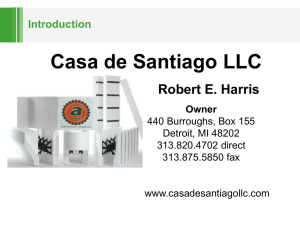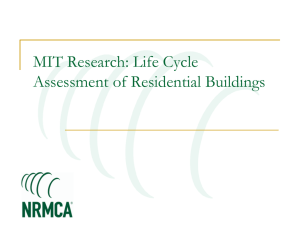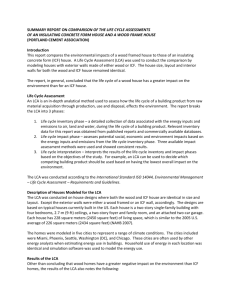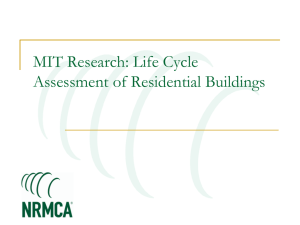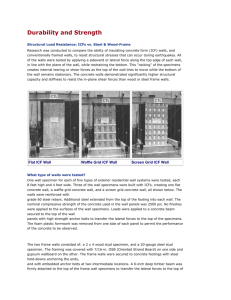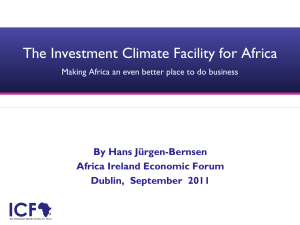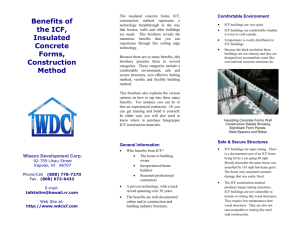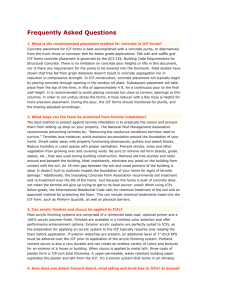The Quality of Concrete Costs Little More
advertisement
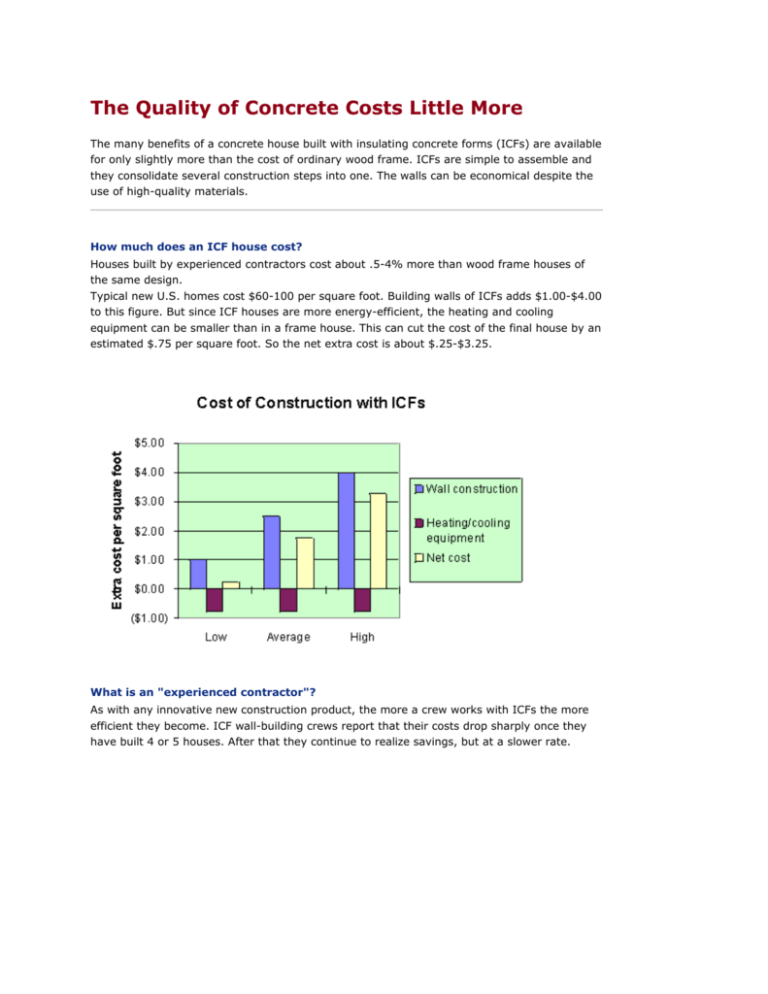
The Quality of Concrete Costs Little More The many benefits of a concrete house built with insulating concrete forms (ICFs) are available for only slightly more than the cost of ordinary wood frame. ICFs are simple to assemble and they consolidate several construction steps into one. The walls can be economical despite the use of high-quality materials. How much does an ICF house cost? Houses built by experienced contractors cost about .5-4% more than wood frame houses of the same design. Typical new U.S. homes cost $60-100 per square foot. Building walls of ICFs adds $1.00-$4.00 to this figure. But since ICF houses are more energy-efficient, the heating and cooling equipment can be smaller than in a frame house. This can cut the cost of the final house by an estimated $.75 per square foot. So the net extra cost is about $.25-$3.25. What is an "experienced contractor"? As with any innovative new construction product, the more a crew works with ICFs the more efficient they become. ICF wall-building crews report that their costs drop sharply once they have built 4 or 5 houses. After that they continue to realize savings, but at a slower rate. Contractors also need experience to size the heating and cooling equipment correctly. Heating and cooling contractors not experienced with homes as energy-efficient as ICF houses tend to install equipment sized for a conventional house. The equipment is larger than necessary, and thus the buyer loses potential savings. More experienced contractors size the equipment more accurately. Why is there such a big range in the costs? The cost of using any construction product is pushed up or down by dozens of factors that change from house to house. But for experienced crews, the major influences on ICF cost are fairly predictable. To begin you can assume that your house will cost $2.00 more per square foot to build with ICFs. This is near the middle of the historical range. Then adjust this cost premium according to the particular features of your construction project: If you can buy ICF forms for $2.00 per square foot Subtract $.50 If you buy ICF forms for $3.00 per square foot Add $.50 If you will finish the exterior with stucco Subtract $.50 If you will finish the exterior with individual shingles Add $.30 If you will build the house to resist high winds Subtract $.50 If you will build the house to resist earthquake Add $.15 If the cost of wood rises to $4 per stud Subtract $.20 If the cost of wood falls to $2.25 per stud Add $.12 If you can buy concrete for $35 per cubic yard Subtract $.16 If you buy concrete for $65 per cubic yard Add $.13 If your design includes cantilevered floors or walls Consult an engineer Why should I pay more? Each year the number of Americans who choose to have their houses built from concrete and ICFs nearly doubles. They cite several big advantages: Comfort. ICF houses are far less drafty than frame, have far fewer “cold spots”, and maintain a noticeably more even temperature. Quiet. Only about one-sixth as much noise travels through an ICF wall. Occupants are pleasantly surprised by the reduction in noise that enters from outside. Strength. Owners of ICF houses feel less flex in their walls and floors. They notice virtually no vibration when they slam a door. Engineering calculations show the walls are much stronger than frame walls in many ways. Field data show they survive many types of natural disaster better. Energy efficiency. ICF walls cut an estimated 30-40% off the energy used to heat and cool a house. This means lower energy costs, to the tune of $200-300 per year for a typical home. What’s the bottom line? When planning a new house, you can estimate that building the walls from concrete with ICFs experienced crews will add $.25-3.25 per square foot to the cost. More precise estimates come from adjusting a mid-range figure (about $2 per square foot) to reflect the specifics of your particular project, or from exact quotes from the contractors and suppliers involved. Weigh this incremental one-time cost against the range of benefits that ICF walls will add to your house over its lifetime. You will see a house built with the quality of insulating concrete forms is an economical choice. More Information? NAHB Research Center, Insulating Concrete Forms for Residential Construction. Washington, DC: U.S. Government Printing Office, 1997. VanderWerf, Feige, Chammas, and Lemay, Insulating Concrete Forms for Residential Design and Construction. New York: McGraw-Hill Inc., 1997. Concrete Homes Hotline: 1-888-333-4840 Concrete Homes Online: www.concretehomes.com

